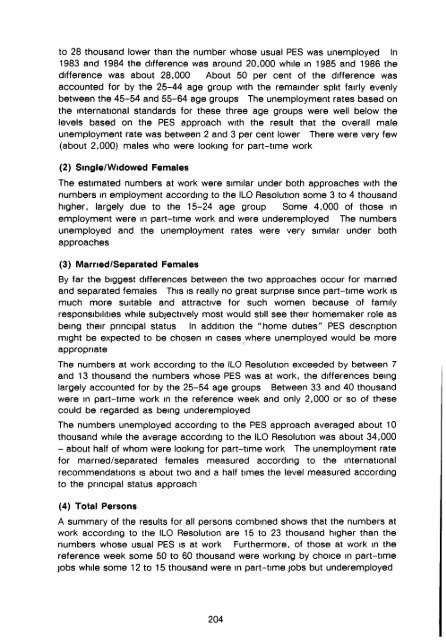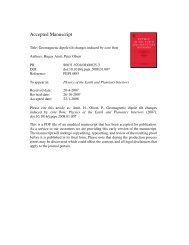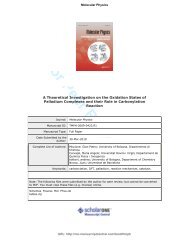WHAT IS THE BEST MEASURE OF EMPLOYMENT AND ... - TARA
WHAT IS THE BEST MEASURE OF EMPLOYMENT AND ... - TARA
WHAT IS THE BEST MEASURE OF EMPLOYMENT AND ... - TARA
You also want an ePaper? Increase the reach of your titles
YUMPU automatically turns print PDFs into web optimized ePapers that Google loves.
to 28 thousand lower than the number whose usual PES was unemployed In<br />
1983 and 1984 the difference was around 20,000 while in 1985 and 1986 the<br />
difference was about 28,000 About 50 per cent of the difference was<br />
accounted for by the 25-44 age group with the remainder split fairly evenly<br />
between the 45-54 and 55-64 age groups The unemployment rates based on<br />
the international standards for these three age groups were well below the<br />
levels based on the PES approach with the result that the overall male<br />
unemployment rate was between 2 and 3 per cent lower There were very few<br />
(about 2,000) males who were looking for part-time work<br />
(2) Single/Widowed Females<br />
The estimated numbers at work were similar under both approaches with the<br />
numbers in employment according to the ILO Resolution some 3 to 4 thousand<br />
higher, largely due to the 15-24 age group Some 4,000 of those in<br />
employment were in part-time work and were underemployed The numbers<br />
unemployed and the unemployment rates were very similar under both<br />
approaches<br />
(3) Married/Separated Females<br />
By far the biggest differences between the two approaches occur for married<br />
and separated females This is really no great surprise since part-time work is<br />
much more suitable and attractive for such women because of family<br />
responsibilities while subjectively most would still see their homemaker role as<br />
being their principal status In addition the "home duties" PES description<br />
might be expected to be chosen in cases where unemployed would be more<br />
appropriate<br />
The numbers at work according to the ILO Resolution exceeded by between 7<br />
and 13 thousand the numbers whose PES was at work, the differences being<br />
largely accounted for by the 25-54 age groups Between 33 and 40 thousand<br />
were in part-time work in the reference week and only 2,000 or so of these<br />
could be regarded as being underemployed<br />
The numbers unemployed according to the PES approach averaged about 10<br />
thousand while the average according to the ILO Resolution was about 34,000<br />
- about half of whom were looking for part-time work The unemployment rate<br />
for married/separated females measured according to the international<br />
recommendations is about two and a half times the level measured according<br />
to the principal status approach<br />
(4) Total Persons<br />
A summary of the results for all persons combined shows that the numbers at<br />
work according to the ILO Resolution are 15 to 23 thousand higher than the<br />
numbers whose usual PES is at work Furthermore, of those at work in the<br />
reference week some 50 to 60 thousand were working by choice in part-time<br />
jobs while some 12 to 15 thousand were in part-time jobs but underemployed<br />
204
















